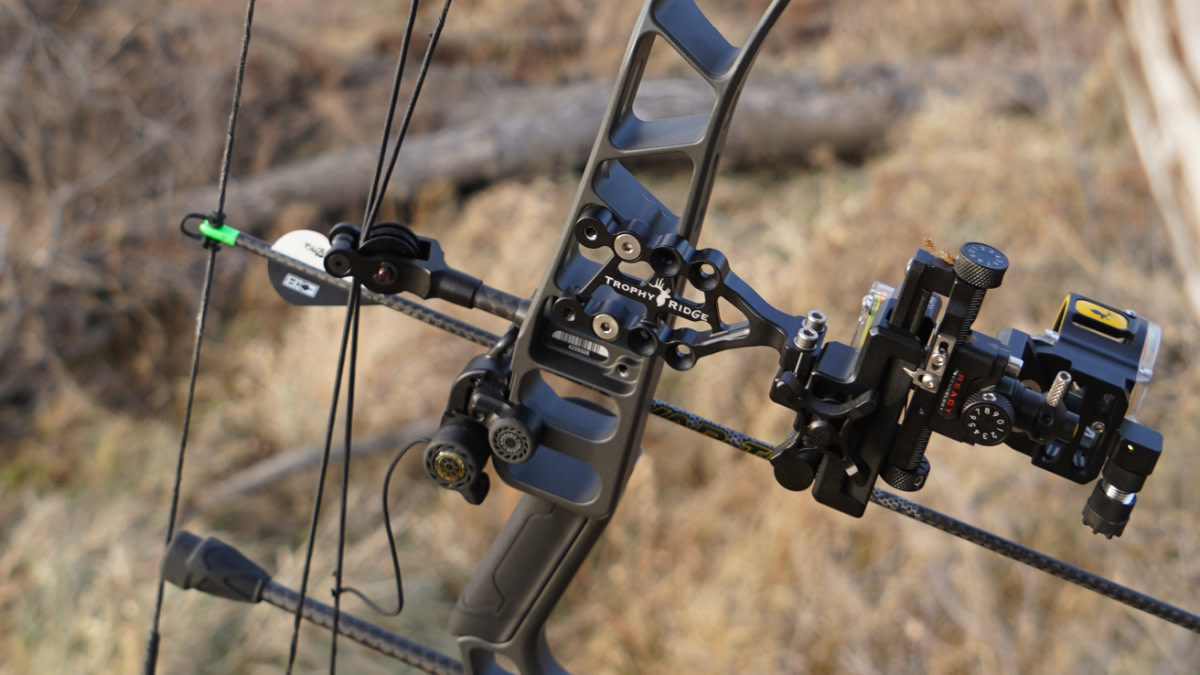
Think about the most common excuses we use to explain away a miss while bowhunting. You’ll probably be able to come up with the best excuses without too much mind-grinding. Ranked first is the damn unseen twig that has deflected everyone’s arrow at least once, and it probably only comes in second to a buck jumping the string. Then there’s the “no time to range” or “guessed him wrong” crowds, along with the using the wrong pin cop-out.
Do you know what most of these have in common? They’re BS. We miss a lot of the time simply because we panic and rush a shot.
That’s the reality of being a bowhunter—you’re only going to gain experience drawing, aiming, and shooting at animals one way. But there is something else you can do to make the process more likely to result in short blood trails. You can dumb down your sight window and aiming process with a single-pin sight.
Single Pin Concerns
Now, I know your rebuttal before you offer it. You don’t want to be messing with a dial and trying to move your sight when something with antlers is walking in. I get it, but I’ve hunted every one of those critters with a bow and have realized that most of those concerns are just in your head.
A summer spent shooting a single pin sight builds the dial process into your regimen. You’ll automatically adjust the sight for the impending shot and very rarely will an animal do something so drastically unexpected that you need to redo everything. In fact, I’ve put over 50 big game animals in the freezer over the last decade while shooting a single-pin mover and have only had that happen twice. Both times were on rutting whitetails and both times I still arrowed the bucks.
You’ll also realize that your bow setup will probably give you an awful lot of leeway as far as shot distance off of one pin goes. For example, if you’re whitetail hunting, you might be solid with your pin dialed to 20 yards for everything that’s going to be plus or minus 15 yards. My setup is fast enough to need almost no adjustment from 5 to 35 yards.
The real benefit here, regardless of shot distance, is that an uncluttered sight window allows you to settle on target without thinking about which pin you need. You’ll never realize the value of aiming with one pin versus five until you look through the red-green-yellow glow of a stacked sight next to a dial option.
Single Pin Solutions
There are plenty of single-pin sights on the market today, unlike a decade ago. I’d be more hesitant to stop using a tried-and-true multi-pin sight if single pins were a new idea, but now nearly every archery accessory brand is making them.
Although you’ll find a wide price range with single pin sights, the high dollar ones are more designed for folks who shoot competitively. The average treestand hunter can fill their need by spending less than $300. Trophy Ridge makes a variety of quality, adjustable sights that won’t break the bank, like the Dovetail React One Pro, React One Pro, and React Trio Pro.
The best sights are those designed with an easy-to-use, well-built dial. If you can spin the dial and notice it’s loose at all, or there is any play in the system, that’s a hard pass. It should move seamlessly and settle into place exactly where you stop—no matter what.
Also consider the orientation of the pin. I prefer a vertical pin because I like to have an open sight window on both sides and tend to come down on my target when I draw. You might not, but you should consider how your shots on game tend to go. If you often miss too far forward or backward, it could be because you’re trying to look around your rack of horizontal pins. A lot of ungulate shoulders and guts get whacked because of this. Having a single, vertical pin can alleviate that left/right creep that never seems to happen at the range but can be a serious affliction in the field.
And a vertical pin allows for a simple hack that can add some distance to your sight without adjustment. If your single pin is set at 20, and you know about how far down your imaginary second pin would be for 30, you can take a dap of whiteout and put it in its place. This gives you a quick 30 yard option that doesn’t take any sight movement.
As a note of caution, the switch to a single-pin mover comes with one big caveat—you’ve got to set it up correctly and give yourself a couple of months to get used to the process. Like anything with archery, you want to build muscle memory. When it becomes second nature, you’ll realize that the simplicity of a lone pin—no matter the shot distance—is a game changer.
Feature image via Captured Creative.






